How can you use a chainsaw on wet wood effectively? Chainsaw is an extremely beneficial and, at the same time, dangerous tool. Typically, it is used to cut dry wood. However, various factors may affect the cutting surface.
In this paragraph, we will see different cases of using an electric chainsaw in wet conditions and explore the process that involves wet wood, dry wood, and power tools.
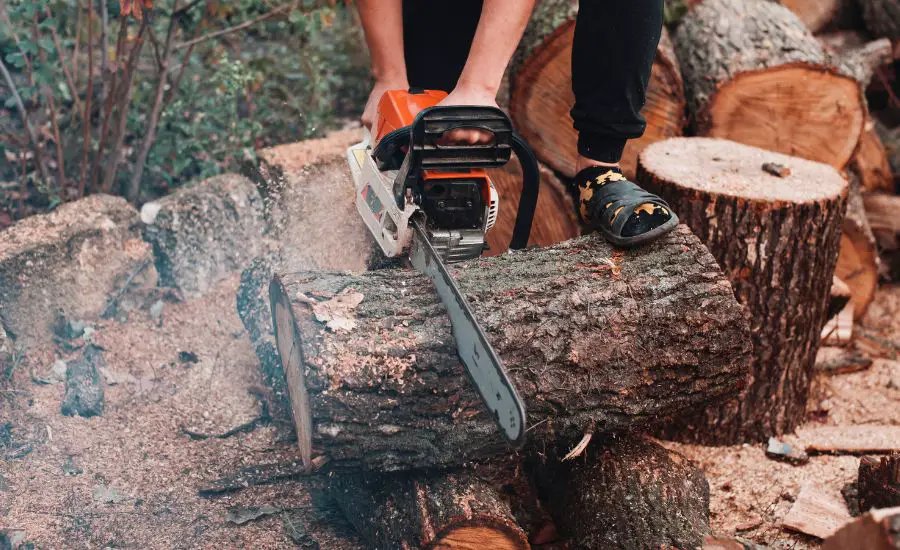
Is it better to cut wet or dry wood with a chainsaw?
Whether it is preferable to cut wet or dry wood while using a chainsaw relies on a number of factors.
Cutting wet wood with an electric chainsaw can become a burden due to the extra moisture. Wet wood tends to be heavier, making it more difficult to handle during the cutting.
While electric chainsaws are able to handle wet trees to some extent, they might not perform as effectively as gas-powered chainsaws.
Gas-powered chainsaws typically have more power and can better handle dense or wet. However, it’s vital to remember that cutting wet wood can be slower and more laborious than cutting dry wood, since cutting wet material can dull the blade. However, it’s crucial to remember that cutting wet wood can be slower and more laborious than cutting dry wood, since chopping wet wood dulls the blade.
One advantage of cutting wet wood is that the moist can act as a natural lubricant for the chainsaw chain, reducing friction.
However, it’s crucial to routinely inspect and maintain the fuel tank and air filter on a gas chainsaw to prevent any potential problems caused by prolonged exposure to soggy conditions.
Cutting wet wood with a chainsaw can have its cons. Extra water in wet wood can force the chainsaw chain to dull faster.
Besides, as wet wood fibers are softer, cutting might be less accurate and result in a more substantial hazard to the wood.
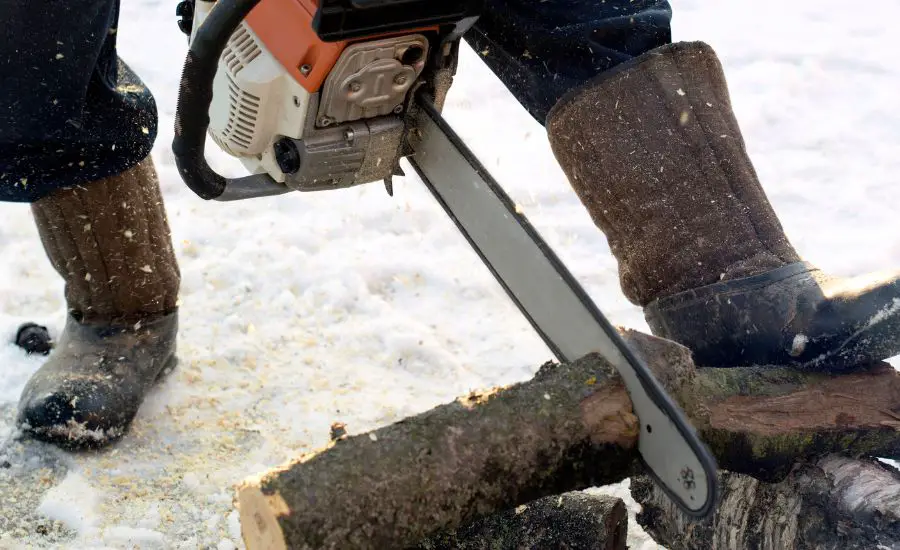
Can you cut wood with a chainsaw after it rains?
Sure, you can cut wood with a chainsaw after it rains. However, keep in mind some critical factors. When working with wet wood, it’s crucial to exercise caution and make sure your chainsaw is operating correctly. Here are some points to consider when you cut wet wood.
Chainsaw selection
Select a chainsaw that can operate in wet situations. A gas-powered chainsaw with a micro-chisel chain and a well-maintained air filter is a good option. This combination can help ensure efficient cutting in wet conditions.
Fuel tank
Gas-powered chainsaws are frequently used to cut through damp wood, so make sure the fuel tank is filled with the right fuel-oil ratio.
Having a full and properly mixed fuel tank will help maintain consistent power and prevent any disruption during the cutting.
Cutting technique
While you cut wet wood, it’s paramount to maintain a steady movement. Take your time and apply consistent pressure to the chainsaw while maintaining safety precautions.
Wet wood may dull the chainsaw chain after a short period, so chain sharpening or replacement might be required.
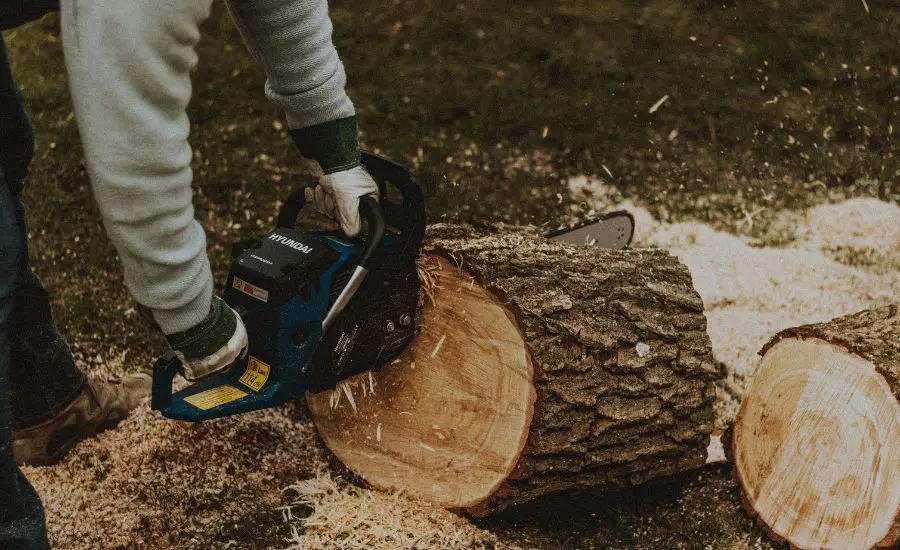
Dampness and wood damage
Be aware that wet wood may lead to more significant wear and tear on the chainsaw in comparison to dry wood, as the moisture can cause it to dull more quickly.
Wet wood can be more mellow, which can grow the risk of harming the wood fibers during the cutting.
Exercise caution and ensure proper chain maintenance to decrease potential damage.
Wet wood might be harder to cut due to increased moisture content and the potential presence of wet grass or other debris. Dead wood, which tends to be drier but has more dense wood, might be easier to cut even after rain.
Can I cut a tree when it is wet?
Yes, it is possible to cut a tree when it’s wet, but there are certain factors to consider ensuring a safe and efficient cutting process. Here are some important points to keep in mind.
Specialist wet wood chain
Employ a special wet wood chain that is designed to cope with the dispute posed by wet wood. These chains are explicitly designed to maintain cutting performance in moist environments.
It is important to note that if you are using an electric saw, operating it during a moist term, do not use an extension cord in long and wet grass.
Green wood
Wet trees often have green wood, which is a complex cutting object. This wood is damper and heavier, thus making it arduous to work with. Secure a powerful enough chainsaw to handle the cutting.
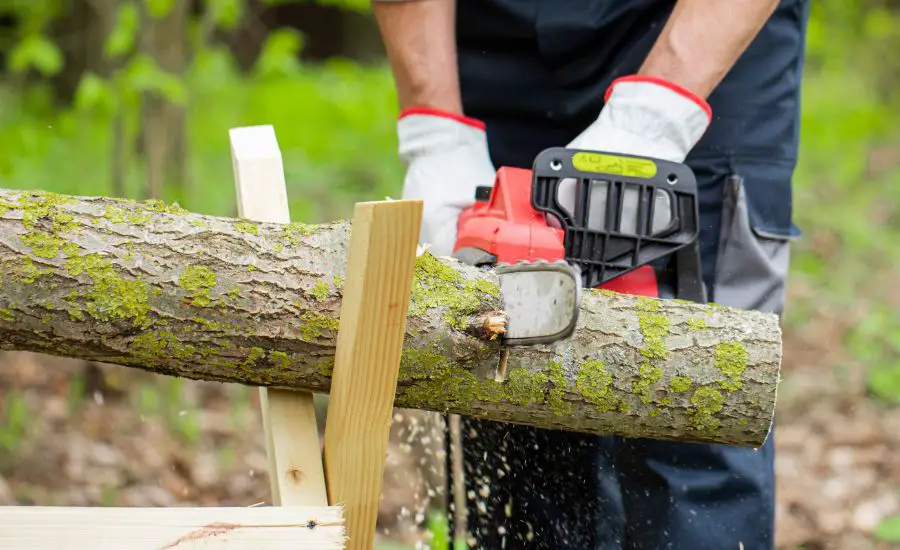
Slippery ground
When you cut wet wood on slippery soil, it can pose a potential safety hazard. Take extra provision and wear appropriate footwear with good traction and be mindful of your footing while operating the chainsaw.
Chainsaw maintenance
Regularly check your chainsaw prior to use, ensuring that it is fully operable. Make sure the chainsaw chains are sharp, the mineral oil reservoir is filled, and the air intake unit is clean to prevent any issues during wet tree cutting.
Protective gear
Always wear apt attire when operating power tools like a chainsaw. This includes special goggles, hearing protection, gloves, and sturdy clothing that can shield you from flying debris.
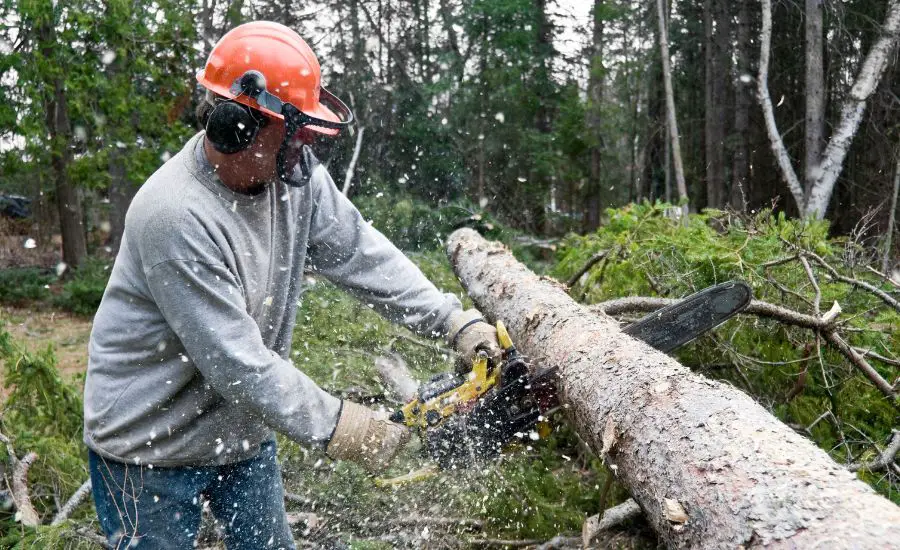
Cutting technique
Adjust your cutting technique when working with wet timber. Take your time and apply consistent pressure to the chainsaw. Be mindful of the wood density and make sure to maintain control of the chainsaw throughout the cut.
Chain lubrication
Secure the chainsaw chain’s proper lubrication with mineral oil to minimize friction and keep the chain running smoothly even though during working with wet wood it might face something like a natural lubricant.
Gas powered chainsaws
Gas powered chainsaws are generally more suitable for cutting moist trees due to their higher power and ability to handle dense wood or even frozen wood as well.
Ensure you are using high-quality chainsaws that are more appropriate for the specific job.
Cutting a tree when it’s wet can be efficient and safe with adequate measures. Use a specialist wet wood chain, maintain your chainsaw, wear protective gear, and be mindful of the challenges posed by wet conditions.
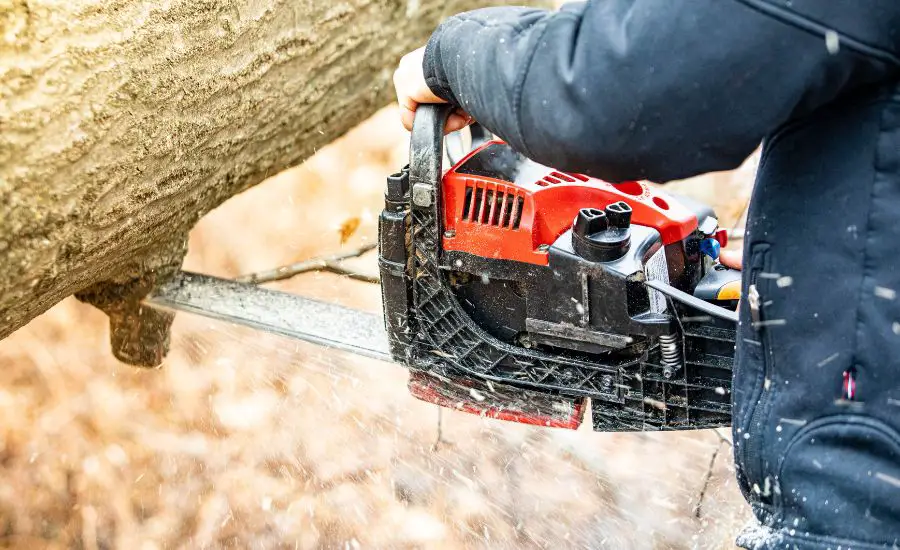
Is it good to cut wood in the rain?
Cutting wood in the rain can be challenging and is generally not recommended. However, there are some factors to consider depending on the specific circumstances. Here are some points to help you cut wet wood:
1.Safety issues. A major concern when cutting wood in the rain is safety. Wet terms can create slimy ground, increasing the risk of accidents and injuries.
2.Regarding equipment. The performance of chainsaw components may be impaired. Wet chainsaw chains and a wet chainsaw blade can lead to deteriorated cutting efficiency and increased wear.
Excessive moisture can also affect the functioning of the chainsaw, potentially leading to damage or malfunction. It is essential to ensure the chainsaw and associated equipment are in proper working condition before proceeding with cutting in wet circumstances.
3. Wood quality. Green wood, that is generally damper, can be more arduous to chop in the rain. Wet wood has a tendency to be denser and heavier, making it more difficult to handle and maneuver during cutting. It may also be more prone to binding, slowing down the process.
4. Preserving wood. Moist wood can absorb rainwater, increasing its moisture content. This can affect the quality of the wood, potentially leading to warping, splitting, or decay over time. If possible, it is advisable to allow the wood to dry before cutting it to maintain its structural integrity.
5. Safety equipment. When cutting wood in the rain, it is paramount to wear proper protective gear. This includes anti-cut clothing, gloves, eye protection, and non-slip footwear.
Example
If you need to cut wood in the rain, it is recommended to use a high-quality chainsaw designed for wet weather.
Certain chainsaws have dedicated wet wood chains which can offer better performance in such scenarios.
Consider using an electric chainsaw with proper safety features, like a throttle trigger and a sprocket cover, to reduce the risk of accidents.
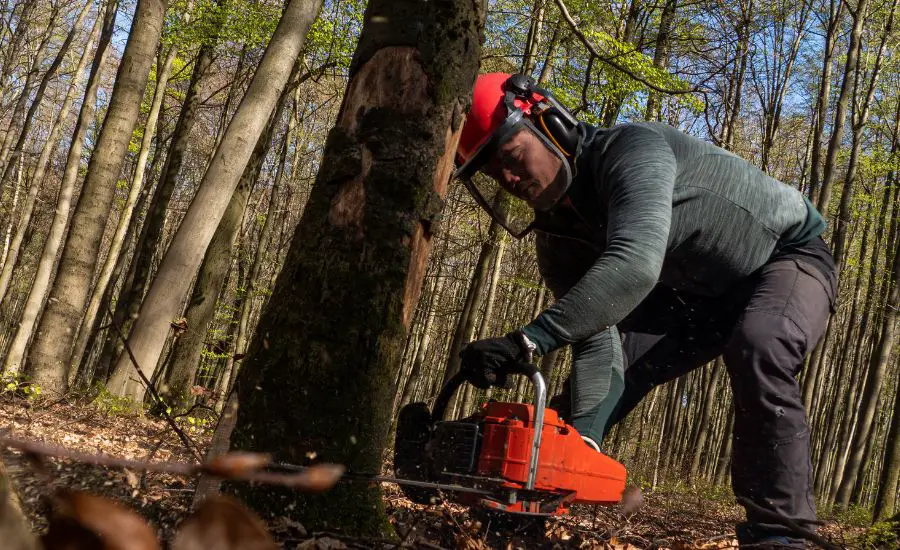
Summarize
Wet wood can be chopped with a chainsaw without the moisture having a substantial impact. However, sawdust may adhere to the chains and sprockets while cutting moist wood.
It’s crucial to do regular maintenance, which includes oiling the guide bars and cleaning the chainsaw.
FAQ
Can I chainsaw wet wood without causing any damage to the tool?
Does wet wood damage the chainsaw? It does, if no appropriate precautions are taken. Here are some considerations regarding the potential effects of cutting wet wood on a chainsaw:
1. Chainsaw chain dulling. Wet wood carries significantly more moisture, cutting wet wood dull the blade expeditiously. The excess moisture can create additional friction and wear on the chain, reducing its sharpness and cutting efficiency.
2. Increased wear and tear. Involving wet wood often results in increased wear and tear on various components of the chainsaw, including the chainsaw blade, sprocket cover, and clutch bearings.
3 Chain oil and lubrication. Wet wood cutting may require more frequent application of chain oil or lubrication. The excessive moisture can wash off the lubrication more quickly, increasing the friction between the chain and the wood.
Is it safe to use a chainsaw in moistened conditions?
Using a chainsaw in moistened conditions is generally not safe. Moisture can make surfaces slippery, increasing the risk of losing control of the chainsaw.
Moreover, it can affect the performance of the chainsaw and may cause the chain to become less effective. It is recommended to wait for the conditions to dry before using a chainsaw for safety reasons.
Which tree might be easier to cut while it’s wet?
Softwood trees, like pine or cedar, tend to be easier to cut when wet because they are less dense and have a softer composition. The moisture in the wood can make it slightly more pliable, making it easier to saw through with a lightweight chainsaw.
Hardwood trees, such as oak or maple, are denser and harder to cut in any condition, including when they are wet.
The balsa wood tree is relatively easy to cut in both wet and dry wood conditions. Due to its low density and softer composition compared to other hardwood trees, cutting through balsa wood with a chainsaw is generally a straightforward process.

